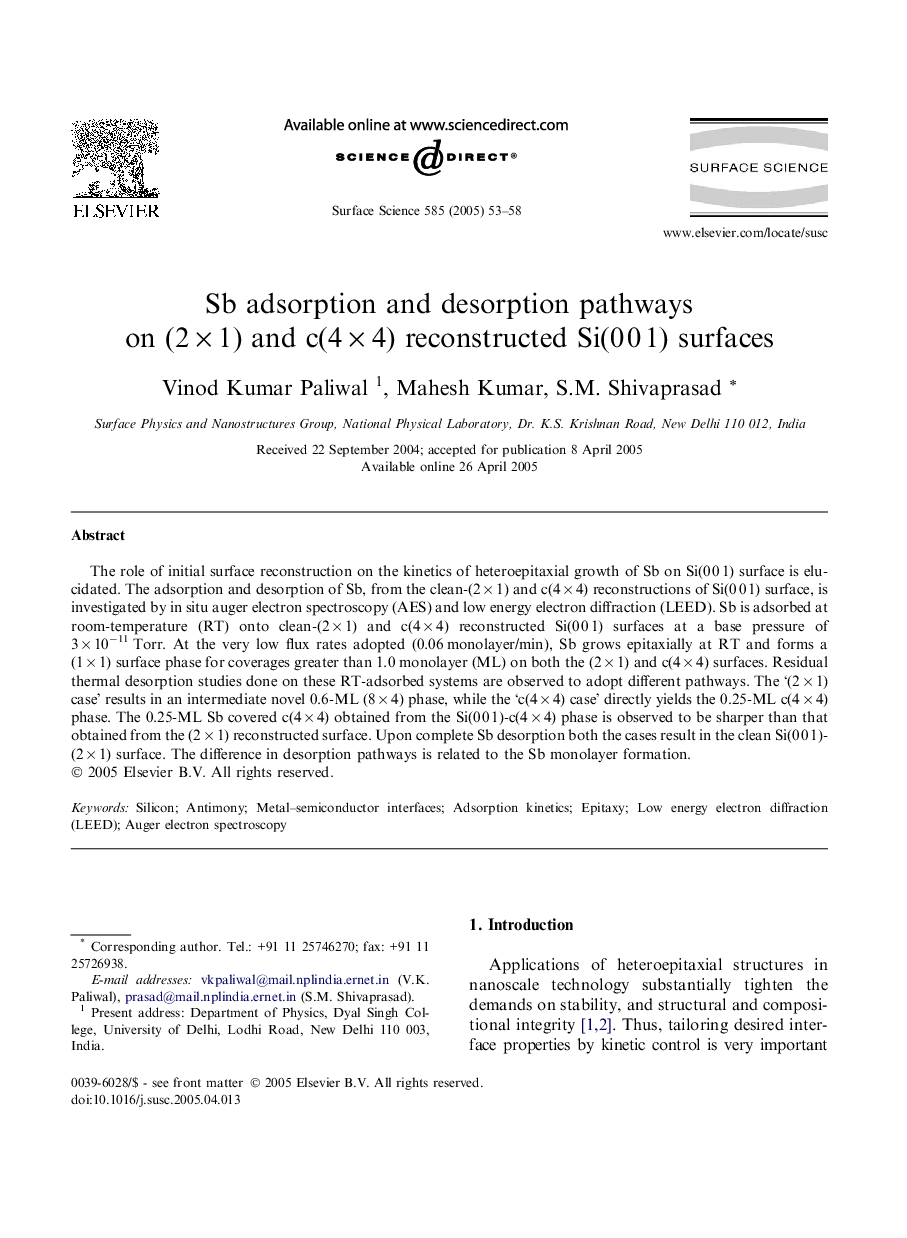| کد مقاله | کد نشریه | سال انتشار | مقاله انگلیسی | نسخه تمام متن |
|---|---|---|---|---|
| 9595185 | 1507974 | 2005 | 6 صفحه PDF | دانلود رایگان |
عنوان انگلیسی مقاله ISI
Sb adsorption and desorption pathways on (2Â ÃÂ 1) and c(4Â ÃÂ 4) reconstructed Si(0Â 0Â 1) surfaces
دانلود مقاله + سفارش ترجمه
دانلود مقاله ISI انگلیسی
رایگان برای ایرانیان
کلمات کلیدی
موضوعات مرتبط
مهندسی و علوم پایه
شیمی
شیمی تئوریک و عملی
پیش نمایش صفحه اول مقاله

چکیده انگلیسی
The role of initial surface reconstruction on the kinetics of heteroepitaxial growth of Sb on Si(0Â 0Â 1) surface is elucidated. The adsorption and desorption of Sb, from the clean-(2Â ÃÂ 1) and c(4Â ÃÂ 4) reconstructions of Si(0Â 0Â 1) surface, is investigated by in situ auger electron spectroscopy (AES) and low energy electron diffraction (LEED). Sb is adsorbed at room-temperature (RT) onto clean-(2Â ÃÂ 1) and c(4Â ÃÂ 4) reconstructed Si(0Â 0Â 1) surfaces at a base pressure of 3Â ÃÂ 10â11Â Torr. At the very low flux rates adopted (0.06Â monolayer/min), Sb grows epitaxially at RT and forms a (1Â ÃÂ 1) surface phase for coverages greater than 1.0 monolayer (ML) on both the (2Â ÃÂ 1) and c(4Â ÃÂ 4) surfaces. Residual thermal desorption studies done on these RT-adsorbed systems are observed to adopt different pathways. The '(2Â ÃÂ 1) case' results in an intermediate novel 0.6-ML (8Â ÃÂ 4) phase, while the 'c(4Â ÃÂ 4) case' directly yields the 0.25-ML c(4Â ÃÂ 4) phase. The 0.25-ML Sb covered c(4Â ÃÂ 4) obtained from the Si(0Â 0Â 1)-c(4Â ÃÂ 4) phase is observed to be sharper than that obtained from the (2Â ÃÂ 1) reconstructed surface. Upon complete Sb desorption both the cases result in the clean Si(0Â 0Â 1)-(2Â ÃÂ 1) surface. The difference in desorption pathways is related to the Sb monolayer formation.
ناشر
Database: Elsevier - ScienceDirect (ساینس دایرکت)
Journal: Surface Science - Volume 585, Issues 1â2, 1 July 2005, Pages 53-58
Journal: Surface Science - Volume 585, Issues 1â2, 1 July 2005, Pages 53-58
نویسندگان
Vinod Kumar Paliwal, Mahesh Kumar, S.M. Shivaprasad,